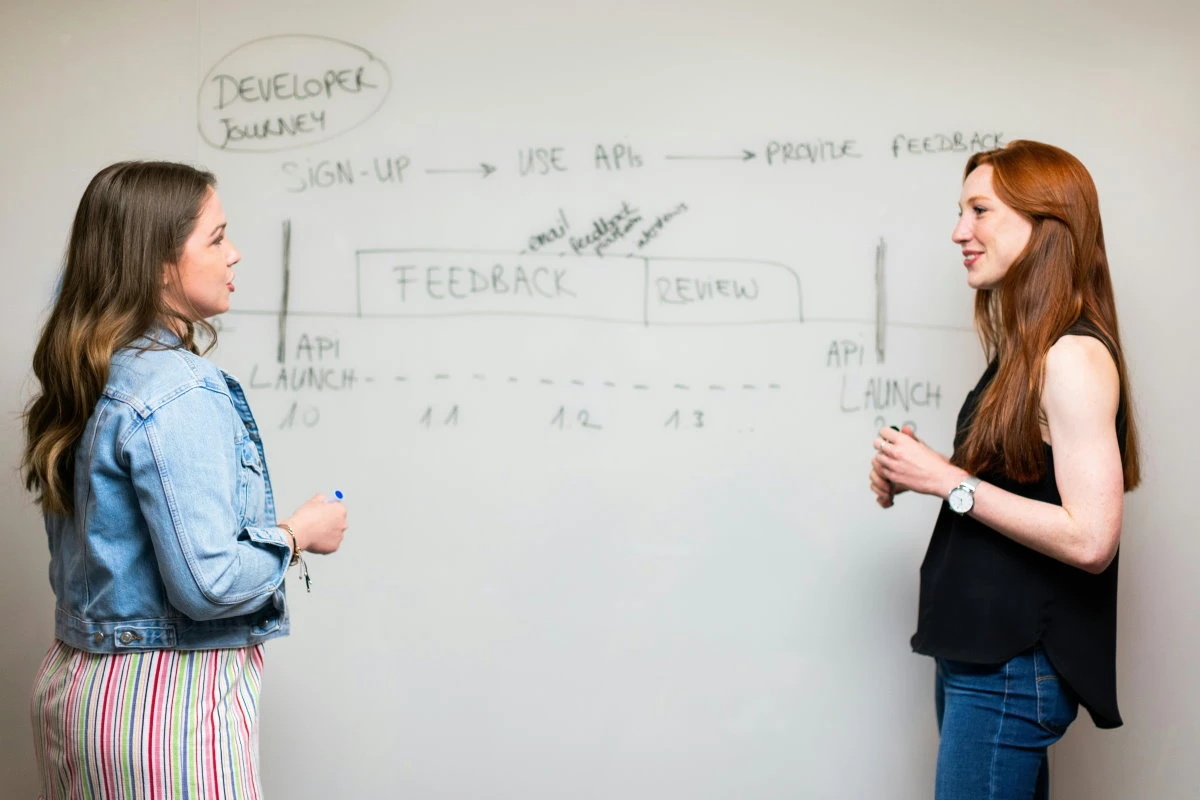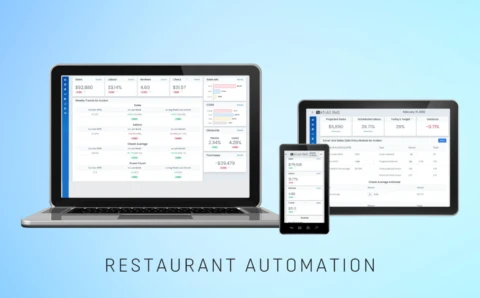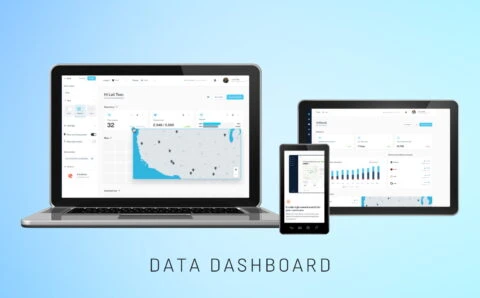
APIs, or Application Programming Interfaces, enable various functionalities and capabilities allow you to extend your software’s opportunities. According to API context, 83% of all web traffic is powered by APIs, proving their value in connecting applications and services seamlessly across diverse platforms. Every integration requires a significant amount of resources, such as time, expertise, and technologies. This aspect may be integral for many entrepreneurs, making it complex for them to estimate the API integration timelines.
2
How many endpoints will the API have?
3
What level of authentication and security do you need?
4
Will the API need to integrate with third-party services?
5
What data storage solution do you need?
6
Do you need rate limiting and traffic management?
7
Will the API require real-time capabilities?
8
What kind of API documentation do you need?
9
Will the API require automated testing?
10
Do you need deployment and hosting services?
11
Do you need ongoing support and maintenance?
2 (1)
How many endpoints will the API have?
Final Step
So, how long does an API integration take? Explore the key factors impacting the milestones, such as the complexity of the API, the level of documentation available, and the experience of the development team. In case you’re a business owner seeking to take your software to the next stage, this guide will equip you with the knowledge to plan your API integration endeavors effectively.
Understanding API Integration
APIs are widely adopted among companies of all sizes. As the State of API Economy 2021 Report claims, 56% of IT decision-makers consider APIs as valuable tools for enhancing digital experiences and products. Besides, 52% believe that APIs expedite innovation by allowing partners to utilize digital assets on a larger scale. Furthermore, 40% view APIs as key facilitators for systems integration, while 36% consider them strategic assets for generating business value.
Definition
An Application Programming Interface (API) can be described as a set of rules and protocols that enable different software applications to communicate with each other. APIs facilitate the exchange of data and functionality in a standardized manner, which gives the opportunity to employ external systems or services without needing to get the underlying code or infrastructure. Therefore, APIs act as intermediaries, facilitating seamless interactions between standalone software systems, whether they are on-premises, cloud-based, or hybrid.
Purpose of integration
Businesses opt for credible API integration services as it’s a solid strategy to elevate software capacity, enhance operational efficiency, and boost user experience.
-
-
- APIs expand functionality by enabling applications to access and leverage external features, such as payment gateways, social media sharing, or geolocation services, without building them from scratch. This helps accelerate development time with access to reliable, tested components.
-
- Improved data exchange and interoperability are also essential benefits introduced by APIs. This means that different systems can share and synchronize data real-time, breaking down silos and ensuring consistency across platforms. Businesses that rely on data-driven decision-making can greatly benefit from this aspect, as it enhances the accuracy and timeliness of information available.
- APIs also enable the automation of routine tasks, cutting down manual effort and minimizing the risk of human error. To illustrate, businesses can automate inventory management, customer notifications, or data entry, obtaining increased productivity and cutting down expenses. Equipped with APIs, companies can create a more fully-fledged, responsive, and scalable technology ecosystem that supports innovation, adhering to dynamic markets, and business growth.
-
Factors Influencing API Integration Time
According to the previously mentioned report, 57% of web applications, as well as 56% of mobile applications, are powered by APIs. But how long does it take to build an API integration, and what factors impact it? Let’s discover below.
Complexity of the API
The complexity of an API significantly impacts the time required for integration. Single-purpose APIs, which serve straightforward functions such as fetching weather data or marketing insights, typically have fewer endpoints and simpler workflows. Such APIs are typically faster to integrate, as they comprise minimal configuration and require less time for comprehending and implementation.
In contrast, multi-functional APIs that deliver a broad range of services, such as comprehensive CRM systems or e-commerce platforms, come with numerous endpoints and sophisticated features. Integrating such APIs demands more extensive planning, testing, and coordination, which can considerably prolong the integration timeline.
Quality of API Documentation
The quality of API documentation is another significant factor within the integration process. Comprehensive, well-organized documentation ensures clear instructions, examples, and challenge-handling tips, which helps developers swiftly understand the API’s functionality and implementation steps. Documentation accelerates the integration process by reducing time spent on deciphering the workings’ peculiarities as well as the API integration cost in parallel.
Conversely, poor documentation, lacking detail, clarity, or up-to-date information, can cause significant delays. Developers may spend extra time diving deeper into the API peculiarities, seeking clarifications, or coping with unforeseen challenges, thereby extending the integration duration.
Developer Expertise
The proficiency and experience of the development team can also streamline or prolong the integration. Experienced developers who are acquainted with API integration best practices, tools, and troubleshooting techniques can navigate the process more efficiently, providing faster implementation. They are adept at identifying potential challenges early and optimizing the integration workflow. Less experienced technicians may face a steeper learning curve, facing challenges that could extend the integration process, respectively.
Project Scope
The size and scope of the project heavily and directly influence the time spent on the API integration. Plain projects with limited objectives and a narrow focus often engage fewer variables and are quicker to complete. Large-scale projects with comprehensive aims, such as integrating an API across multiple systems or for a global application, require more extensive planning, coordination, and resources. The complexity and breadth of such projects can increase the time needed for successful integration.
Testing and Debugging
In-depth testing and debugging are a must to ensure the API integration operates accurately, securely, and as intended. This phase refers to validating data exchange, guaranteeing compatibility across systems, as well as determining and resolving any bugs or performance failures. While comprehensive testing adds to the overall integration time, it is critical for preventing potential issues or vulnerabilities in the future, providing enhanced reliability and failure resistance of your integration.
Support and Communication with API Provider
The availability and responsiveness of the API provider’s support team can cut down the integration timeline. Prompt and helpful support can facilitate quick issue resolution, provide insights, and offer guidance on best practices, thereby optimizing the integration process.
Conversely, limited or slow support can lead to prolonged troubleshooting and delays, as developers may struggle to resolve issues independently. Effective communication with the API provider ensures smoother integration and faster time-to-market for the project.
Typical Timeframes for API Integration
The timelines for API integration can vary based on factors such as the complexity of the API, the quality and clarity of its documentation, the existing infrastructure, and the experience level of your development team. Besides, you should consider unexpected technical challenges and the need for extensive testing and debugging, which can significantly impact the timeline.
Simple Integrations
Simple API integrations, such as implementing social media logins or integrating basic marketing tools, are relatively straightforward. In most cases, these tasks cover single-purpose APIs with clear documentation and minimal configuration. A widely-faced instance of a simple integration is adding a “Login with Facebook” button or connecting to an email marketing service.
Such integrations can typically be completed within a few hours to a few days, depending on the specific requirements and the developer’s specialization with the API.
Intermediate Integrations
Intermediate integrations engage more complex systems such as payment gateways (e.g., Stripe, PayPal) or CRM systems (e.g., Salesforce, Hubspot). These APIs offer more features and require additional configuration to handle tasks like secure transactions or customer data management. Integration at this level often demands more profound testing and issue resolution to ensure resilience and sufficient protection.
Typically, these integrations take several days to a couple of weeks to execute, factoring in the time needed for thorough testing and adjustments.
API Integration Costs: What's the Investment?
Understand the financial factors involved in API integration and make informed decisions for your business.
Best Practices to Expedite API Integration
How much time does API integration take, and how can it be accelerated? Following the best API integration practices will help you streamline the development flow, cut down the likelihood of errors, and provide compatibility and performance. Thus, your development team can minimize rework and debugging time, ultimately leading to faster and more reliable integration.
Preparation and Planning
Thorough preparation and planning are fundamental for efficient API integration. Begin with detailed research to fully grasp the API’s functionality, requirements, and limitations. You may stick to activities such as reviewing the documentation, exploring use cases, and defining potential challenges. Next, creating a clear project plan that outlines the steps, timelines, and resources needed helps eliminate obstacles and ensures a smooth integration process. By investing time in the planning phase, you can liquidate common pitfalls and decrease the possibility of delays.
Clear Communication
Maintaining clear and consistent communication can streamline API integration. Internally, make sure that all team members are fully aware of their roles, responsibilities, project objectives, and the API’s capabilities. When cooperating externally, you should establish a reliable and handy communication channel with the API vendor for timely support and updates. Cohesive cooperation and seamless communication ensure you can quickly address any arising issues, share critical information, and make informed decisions, thereby boosting the integration process.
Use of API Management Tools
Employing API management tools can significantly enhance the efficiency of the integration process. Such instruments bring in automation capabilities, streamline workflows, and offer features like version control, access management, and monitoring. Tools such as Postman for testing or Swagger for API documentation are proven to help manage the integration more effectively, minimize manual tasks, and deliver consistency across diverse stages of the project.
Regular Testing
Implementing continuous integration and continuous deployment (CI/CD) practices is vital for accelerating API integration. According to Deloitte, among companies that have achieved successful API management transformations, 77% effectively implement their strategy through operational mechanisms, continuously monitor progress, and adapt as needed.
Regular testing, automated via CI/CD pipelines, is excellent for identifying and liquidating issues early in the development cycle. Thus, the integration remains robust and secure throughout, guaranteeing quicker update deployment and cutting down on downtime. Continuous testing and feedback loops lead to more robust integrations and accelerated time-to-market.
Case Studies or Examples
Let’s get acquainted with the market cases that demonstrate how businesses can achieve efficient and impactful integrations that drive success.
Airbnb and Google Maps
Airbnb’s integration with Google Maps is a prime example of successful API integration. Through Google Maps API, Airbnb is now able to provide guests with detailed location information, nearby attractions, and route planning without closing their platform. This integration elevates user satisfaction and contributes to increased booking rates by making location data readily accessible and visually engaging.
Slack and Third-Party Services
Slack, a leading communication platform, has smoothly integrated with a range of third-party services such as Google Drive, Trello, and GitHub through APIs. A seamless integration with this vast list of external platforms allows users to access files, manage tasks, and track code modifications directly within Slack channels. Such a centralized and streamlined approach has greatly improved productivity and collaboration, showcasing the power of APIs in creating a cohesive and efficient workspace.
Stripe and E-commerce Platforms
Stripe’s API integration with various e-commerce platforms like Shopify and WooCommerce demonstrates the effectiveness of a well-documented and versatile API. By offering easy-to-integrate payment solutions, Stripe enables businesses to quickly set up secure and reliable payment gateways, enhancing their ability to process transactions smoothly and scale operations effectively.
Lessons Learned
Here are some key insights provided by the cases we’ve just gone through:
-
- Putting users first. Airbnb’s success with Google Maps highlights the significance of user-centricity and understanding their needs to select the relevant API.
- Fully-fledged functionality. Slack’s integration with various services defines the value of APIs in extending user capabilities and enhancing their experience and functionality, which delivers greater satisfaction and retention.
- Choose reliable APIs. Stripe’s integration success demonstrates the necessity of choosing APIs that are well-documented, reliable, and scalable. This optimizes the integration flow and supports long-term growth.

Restaurant Management
Introduced a cloud management system for restaurants, automating tasks and improving profitability with advanced forecasting and trend tracking.

Upcomer
Upcomer, the go-to esports hub, was revitalized by our team, optimizing code and boosting user engagement by 50%, enhancing overall performance.

Spontivly
We transformed Spontivly with 120+ integrations, making data dashboards more comprehensive, accessible and efficient for 70+ firms, boosting their performance.
Conclusion
The time API integration takes is widely variable. It depends on factors such as:
-
- The complexity of the API;
- The quality of documentation;
- Developers’ expertise;
- Project scope;
- Testing requirements;
- Support availability.
Planning thoroughly, communicating effectively, and employing the right, time-tested tools and practices are crucial to ensure a smooth and efficient integration. If you’re a business considering an API integration project, we at PLANEKS are here for you to help. With a profound software engineer team, we’ll help you with every API integration stage, navigate tech challenges, and achieve fruitful, tangible outputs. Reach out to PLANEKS today; we will ensure seamless API integration and tangibly boost your business.


